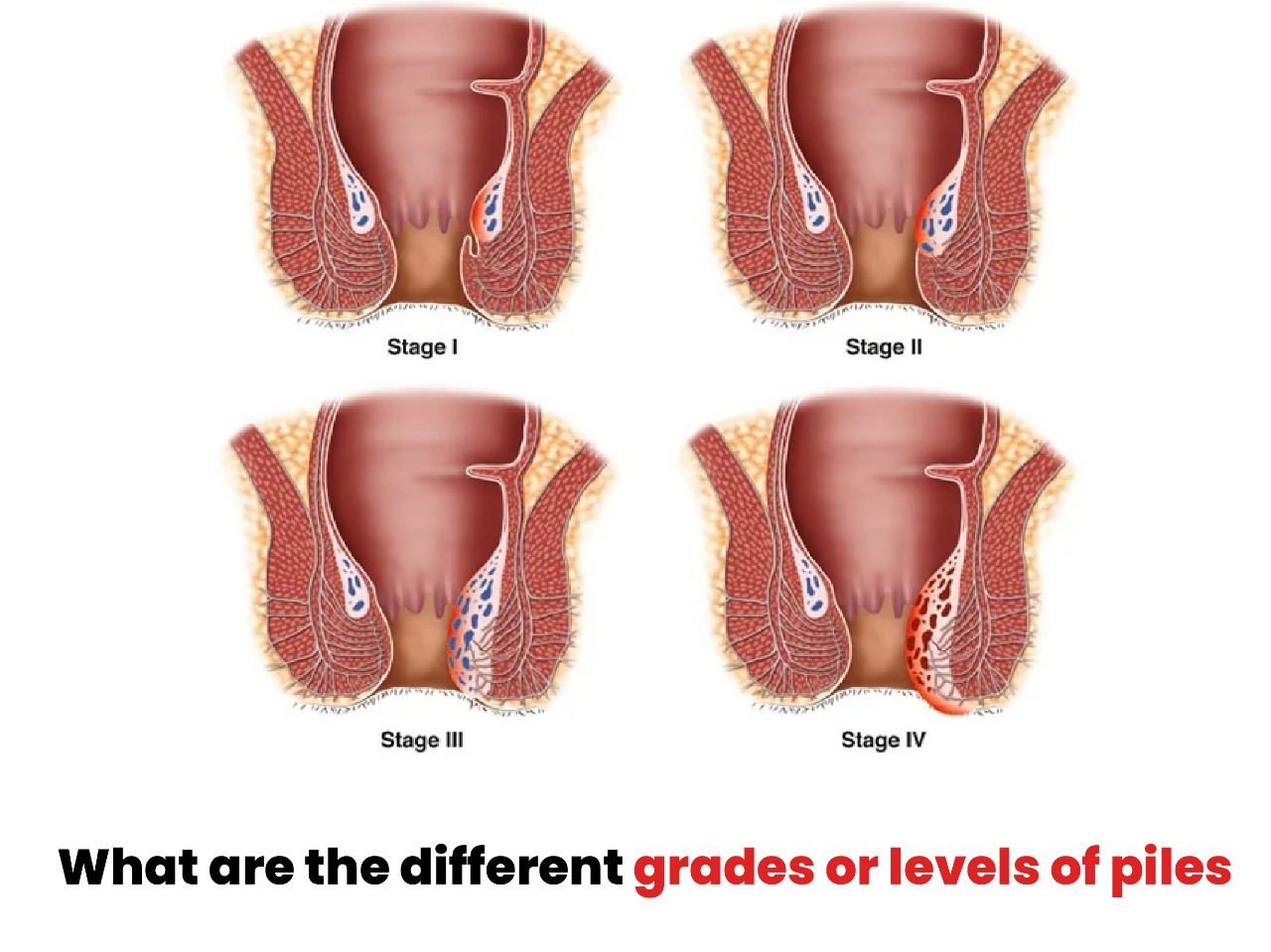Alright, let’s be real. Talking about piles (or hemorrhoids) isn’t exactly dinner conversation.
But if you’re dealing with the discomfort, the itching, or that unsettling feeling down there, you’re not alone.
These swollen veins in your anus or rectum are super common – in fact, it’s estimated that about half of Indians will experience them by age 50!
While most piles are just annoying and go away on their own, some can be more persistent or cause more trouble.
How do you know how serious yours might be? Well, that’s where understanding the levels of piles comes in handy.
Think of it like a grading system for severity.
It helps doctors figure out what’s happening and the best way to help you find relief. Let’s break it down, shall we?
More Than One Type? Yep!
Before we dive into the grades, it’s good to know there are a few different types of piles based on where they pop up:
- Internal Piles: These form inside the rectum. Because there aren’t many pain nerves there, you might not even know you have them unless they bleed or get large enough to cause problems.
- External Piles: These are on the outside around the anus. You can often see or feel them as bumps. They have more pain nerves around them, so they can be quite uncomfortable or painful, especially when sitting or passing stool.
- Thrombosed Piles: This is when a blood clot forms inside either an internal or external pile. Ouch! This usually causes sudden, severe pain, swelling, and often a bluish color. This is definitely a situation where you want to see a doctor ASAP.
The Levels: Grading the Protrusion
Okay, now for the “levels” or “grades.”
When doctors talk about grades (Grade I, II, III, IV), they are primarily referring to internal piles and how much they prolapse (meaning, how much they stick out) during a bowel movement.
Here’s the breakdown of the classic four levels of piles:
- Grade I: The Shy Guy. These are internal piles that stay inside the rectum. They might bleed during a bowel movement (you might see bright red blood on the toilet paper), but they don’t prolapse or stick out of the anus at all. You might not even feel them!
- Grade II: The Peek-a-Boo Piles. These internal piles might prolapse (come out) when you’re having a bowel movement, especially if you strain. But, the good news is, they go back inside on their own afterwards without you having to do anything.
- Grade III: Needs a Little Help. These internal piles prolapse during a bowel movement or with physical exertion, and they don’t go back inside on their own. You have to manually push them back in. This level often comes with more noticeable discomfort, itching, or pain. Medical treatment is often needed at this stage.
- Grade IV: The Permanent Resident. These piles are prolapsed all the time and cannot be pushed back inside. They are permanently sticking out of the anus. This is often the most painful and uncomfortable grade and definitely requires medical attention to manage symptoms and prevent complications.
You can sometimes see Grade III or IV prolapsed piles as red, swollen lumps hanging from the anus – not exactly a pretty sight, and often quite symptomatic.
What About External and Thrombosed Piles?
It’s important to note again that external and thrombosed piles don’t neatly fit into this Grade I-IV system.
They are distinct types of hemorrhoids that have their own set of symptoms and treatment approaches.
While an external pile might swell up and feel like a lump (especially if thrombosed), it’s not graded on how much it prolapses from inside the rectum.
When to See a Doctor
Look, while many piles are mild, don’t hesitate to get medical advice if:
- You experience persistent rectal bleeding (more than a week).
- You have significant pain or discomfort that affects your daily life.
- You feel a lump that is painful or doesn’t go away.
- You suspect you might have thrombosed piles (sudden, severe pain).
- You’re unsure if your symptoms are actually piles or something else like an anal fissure.
Understanding the levels of piles is a good first step, but a proper diagnosis from a healthcare professional is always best.
They can accurately assess the grade and type of your piles and recommend the most effective piles treatment for your specific situation.
Ready to get some relief?
If you’re struggling with the discomfort of piles, don’t suffer in silence.
Understanding the grades of piles is powerful, and getting expert help is even better.
To prevent piles or discuss your symptoms, call us at Laserqure Laser Clinic.
Fix a meeting with one of our physicians today.

